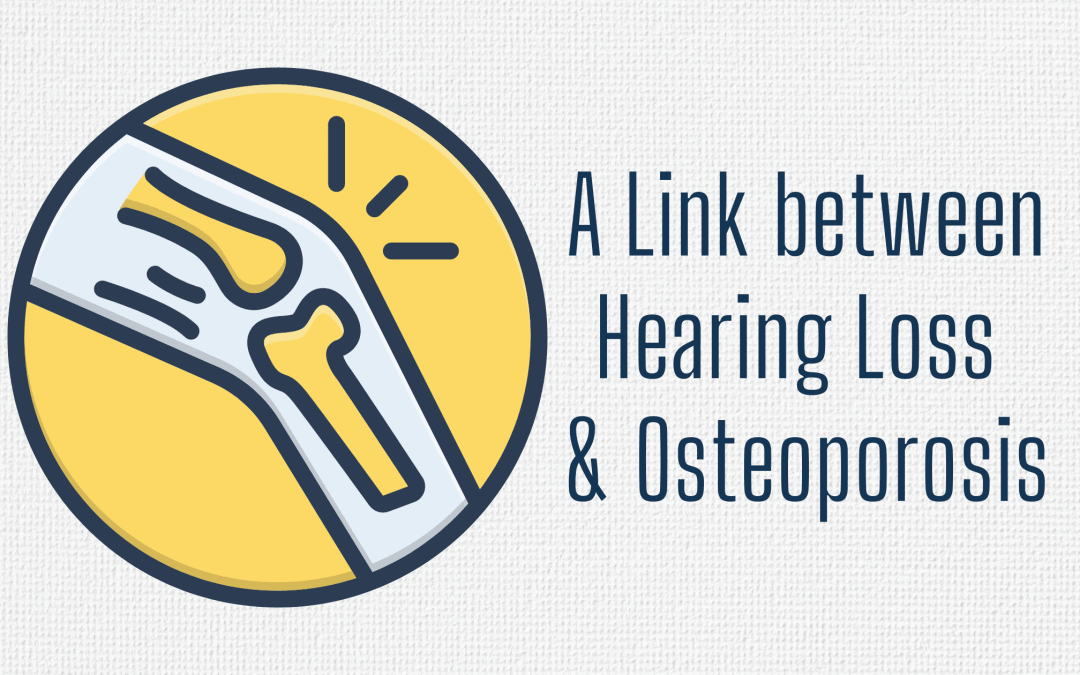Osteoporosis is a condition that causes a loss of bone density which increases the risk of fractures and breakage. According to the International Osteoporosis Foundation, an estimated 44 million people experience osteoporosis or low bone mass. It is more common among women – according to the Centers for Disease Control and Prevention. 1 in 4 women and 1 in 20 men aged 65 and over experience osteoporosis. The development of osteoporosis becomes a greater health risk as older adults age. Less commonly known is the relationship between osteoporosis and hearing loss. Research shows that there is a correlation between osteoporosis and age-related hearing loss.
What is Osteoporosis and Bone Health?
The body is continually renewing bone tissue, constantly absorbing and replacing. However, the speed at which this happens progressively slows down with age. Bone mineral density (BMD) is crucial in evaluating osteoporosis, as it helps determine the strength and health of bones. Though a lowering bone density is a common component of aging, losing bone mass quicker than tissue is created leads to osteoporosis. This condition causes bones to weaken, becoming more fragile and susceptible to breaking. The most common osteoporosis-related injuries occur in the wrist, spine, and hip.
People usually do not experience any symptoms with osteoporosis and are unaware they are experiencing it until they have a fracture or broken bone. Older adults may experience greater difficulty recovering from osteoporosis-related injuries, leading to pain and mobility issues, making it challenging to navigate daily life. Additionally, osteoporosis can impact hearing health. Understanding the risk factors, such as hormonal changes and lifestyle choices, is essential in preventing and reducing the likelihood of developing osteoporosis.
Understanding How Hearing Works and Sensorineural Hearing Loss
The auditory system refers to how we hear and understand sound. This system involves the ears and brain, which work together to absorb and process sound.
- Outer ear: consists of the most visible part of the ear, which collects sound from the environment. The sound travels through the ear canal and lands on the eardrum.
- Middle ear: the movement of the eardrum activates the auditory ossicles, three tiny bones that are connected. The ossicles help amplify the sound and propel the soundwaves further into the ear.
- Inner ear: the hair cells and fluid in the cochlea work to translate the incoming soundwaves into electrical signals that are then sent to the brain to further process and interpret.
When any of these components are impacted or damaged, it disrupts this process, preventing sound from being adequately processed. When sound is not sufficiently processed, hearing loss results which is a permanent medical condition.
Link Between Hearing Loss & Osteoporosis
Studies show that osteoporosis can increase the risk factor of developing hearing loss. Specifically, osteoporosis can impact the auditory ossicles – the bones in the middle ear. Among the smallest in the body, these connected bones amplify and help move soundwaves, which is critical to how sound is processed. Osteoporosis can contribute to the weakening and deterioration of these bones, which can impair the hearing process.
Various risk factors contribute to both osteoporosis and hearing loss, including age, family history, lifestyle choices, and certain medical conditions.
A significant study highlighting the relationship between osteoporosis and hearing loss was published in The Journal of Clinical Endocrinology & Metabolism in 2015. Interested in investigating this correlation, researchers at the Chi Mei Medical Center in Taiwan examined data from a national health database. They compared 10,660 people diagnosed with osteoporosis between 1998 and 2008 to 31,980 people (selected at random) without osteoporosis. Following the participants until 2011, the findings included:
- People with osteoporosis were 76% more likely to develop sudden hearing loss.
- Women with osteoporosis were 87% more likely to develop sudden hearing loss compared to men.
Ensuring adequate vitamin D intake is crucial for maintaining bone health and preventing osteoporosis.
These findings reveal a significant correlation between both conditions. Co-author of the study, Dr. Kai-Jen Tien explained, “a growing body of evidence indicates that osteoporosis affects not only bone health, but the cardiovascular and cerebrovascular systems… Our findings suggest sudden sensorineural hearing loss can be another broader health problem connected to osteoporosis.” This study underscores the increased health risk posed by osteoporosis and also emphasizes the need to protect hearing health. Additionally, understanding musculoskeletal and skin diseases is essential for overall health.
If you have osteoporosis, it is vital to be proactive about your hearing health. This means that you should have your hearing tested regularly and practice ways to mitigate potential harm. A few tips you can integrate into daily life include:
- Wear hearing protection like headphones, earbuds, earmuffs etc. which serve as a protective barrier, reducing the impact and amount of noise that is absorbed
- Reduce exposure to loud noise by choosing quieter environments to be in, avoiding noisy settings, maintaining lower volume levels on electronic devices etc.
If you have experienced changes in your hearing, it is essential to seek a hearing test! Contact us today to schedule an appointment.

